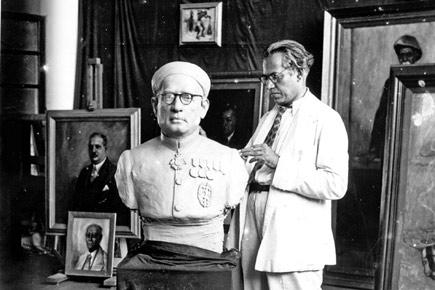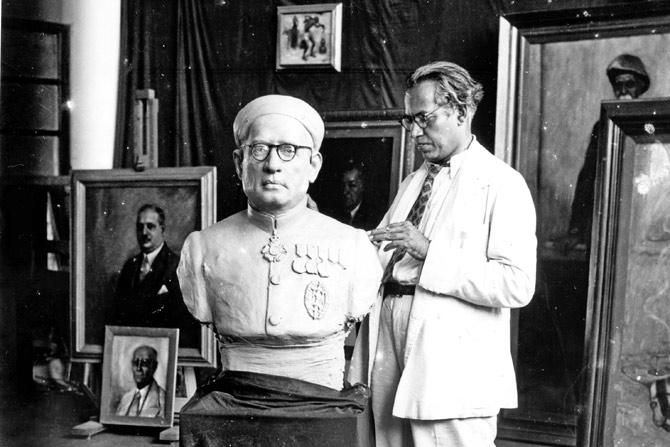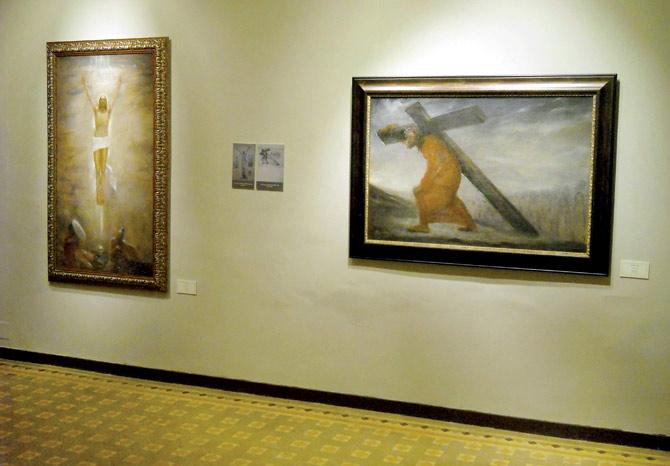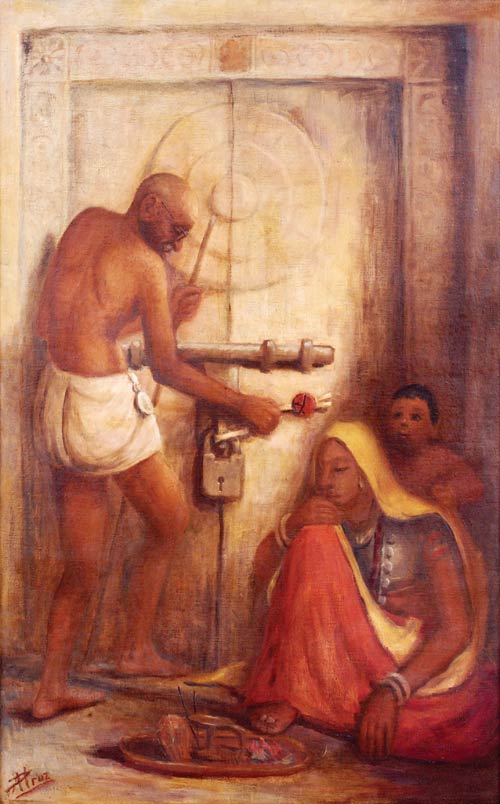Curator Ranjit Hoskote rescues artist Antonio Piedade da Cruz and his association with Mumbai from oblivion, for an ongoing show in Panjim's Sunaparanta

Antonio Piedade da Cruz
 The next time you are at Goregaon’s Aarey Milk Colony, look for a little known fact about an artistic contribution to its verdant quarters made in the early Independence years. In the popular picnicking spot, Chhota Kashmir stands a sculpture fittingly titled, Dudhwala, as homage to Aarey’s prime dairy enterprise. Looking at the robust but forlorn sculpture, it is hard to imagine that its maker paid artistic tributes to India’s grandees, such as Lord Brabourne and the Maharajahs of Travancore, as much as the pastoral labourer.
The next time you are at Goregaon’s Aarey Milk Colony, look for a little known fact about an artistic contribution to its verdant quarters made in the early Independence years. In the popular picnicking spot, Chhota Kashmir stands a sculpture fittingly titled, Dudhwala, as homage to Aarey’s prime dairy enterprise. Looking at the robust but forlorn sculpture, it is hard to imagine that its maker paid artistic tributes to India’s grandees, such as Lord Brabourne and the Maharajahs of Travancore, as much as the pastoral labourer.
ADVERTISEMENT

Antonio Piedade da Cruz at his studio at Churchgate's Stadium House in 1943
An artist cut in two, the story of Antonio Piedade da Cruz is one that has needed rescuing from oblivion and a dose of art resuscitation. Last week, the Goa-based industrialist family of the Salgaocars opened up their collection of da Cruz’s works in an exhibition that has been three years in the making. Researched and curated by poet, curator and cultural theorist Ranjit Hoskote, the exhibition sets out to fix a gap in the story of India’s Moderns; while many of his contemporaries saw top-dollar at auctions and rigorous critique of their works, da Cruz has been denied his share.

At the ongoing exhibition, the Christ sanctum interprets that da Cruz’s Christ was not one of an orthodox institution but rather a redeemer of the oppressed
The exhibition, titled The Quest for Cruzo: A Homage to the Art of Antonio Piedade da Cruz, opened last week at Sunaparanta, the charming arts centre set up by industrialist Dattaraj Salgaocar in Panjim. It will be on show till July 20. In many ways, this is a homecoming for da Cruz. Born in Velim, Salcete, in Portuguese-ruled Goa in 1895, he studied in Mumbai’s Sir JJ School of Art (like many of his artistically-inclined Goan peers) and Berlin, but decided not to return to his home-state. He knew he wouldn’t be welcome in a Goa under the dictatorial regime of Antonio Salazar de Oliveira of Portugal.

Instead, he functioned out of his studio in Mumbai. In his curatorial essay, Hoskote, who has sourced archival photographs for this exhibition, draws attention to this bit of da Cruz’s history that was overtaken by Mumbai’s glitzy growth. It was between the 1980s and early 2000s, when Hoskote would stop by for ice-cream at Churchgate’s famous parlour, K Rustom’s that was housed on the ground floor of Stadium House. “Looking above,” he writes, “[I] would wonder about the artist who carried on his practice above, picturing him as a recluse or man of mystery.” Eventually, the red lettering which advertised Cruzo Studio disappeared altogether. “Between the 1930s and the 1950s, the Cruzo Studio served...as a lively meeting ground for artists, writers and activists, a hub for cultural discussion and political debate...it offered refuge to members of the Goan resistance against the Salazar regime.”

Dudhwala, a scuplture commissioned from Cruz in the 1950s, in post-Independent India, stands in disrepair at Goregaon’s Aarey Milk Colony. Pic/Sayyed Sameer Abedi
“Da Cruz’s association with Mumbai was deep and strong, from his studio on Veer Nariman Road, to public commissions such as the Dudhwala public sculpture in the Aarey Milk Colony,” says Hoskote. Da Cruz’s influence among the glitterati of his times was such that The Cricket Club of India (CCI), in search of a new stadium, asked him to intercede on their behalf to Lord Brabourne, whose portrait da Cruz was painting at the time.

Temple Entry (1965), in which da Cruz expressed his interest in the condition of India’s poor
Despite the circles that da Cruz kept, Hoskote maintains that the artist’s deepest sympathies lay with the wretched of the earth. “There were two different streams within da Cruz’s oeuvre. One part of his studio practice was portraiture in an academic realist style. The other part was his symbolic-allegorical narratives — heightened, dramatic works that suggest psychological realities and national narratives. When we look at the photographs of his studio, we see that he never sold the works in which he addressed the anti-colonial struggle,” says Hoskote. He points out Temple Entry: Touch the Untouchables (1965), in which a poor mother and child sit limply outside temple doors. In You Crucified Me Again (1969), the regalia of the church hierarchy is contrasted with the poor commoners.
The curator cites da Cruz’s two meetings with Gandhi and a cycle of 24 paintings that he dedicated to the Mahatma, from his return from South Africa to his assassination. Referring to the Christ sanctum in the exhibition, Hoskote says, “Da Cruz’s Christ was not the Christ of the orthodoxy but rather, a redeemer of the oppressed; a Jesus who emerges from the classes that work and not the classes that enjoy the fruits of others’ work.”
Hoskote’s research follows Salgaocar acquiring Cruz’s works after his studio was repossessed by the CCI. Lying in neglect in a storeroom (Hoskote points out the city’s pigeons and its coastal climate are to blame), the paintings were expertly restored by Kayan Marshall Pandole. However, this obscurity, says Hoskote, is not unusual in itself as there were several factors working against da Cruz, such as the dwindling patronage post-Independence.
The Quest for da Cruzo is part of Hoskote’s engagement with the culture of the Goan diaspora, and also an ongoing research project into the lost histories of the Indian modern, on which he collaborates with cultural theorist and art critic Nancy Adajania. The lost history da Cruz could have something to do with Mumbai’s psyche. “[Da Cruz] had been relegated to amnesia by an art world whose memory and attention span are fickle, and by the public culture of Bombay…” writes Hoskote.
 Subscribe today by clicking the link and stay updated with the latest news!" Click here!
Subscribe today by clicking the link and stay updated with the latest news!" Click here!






